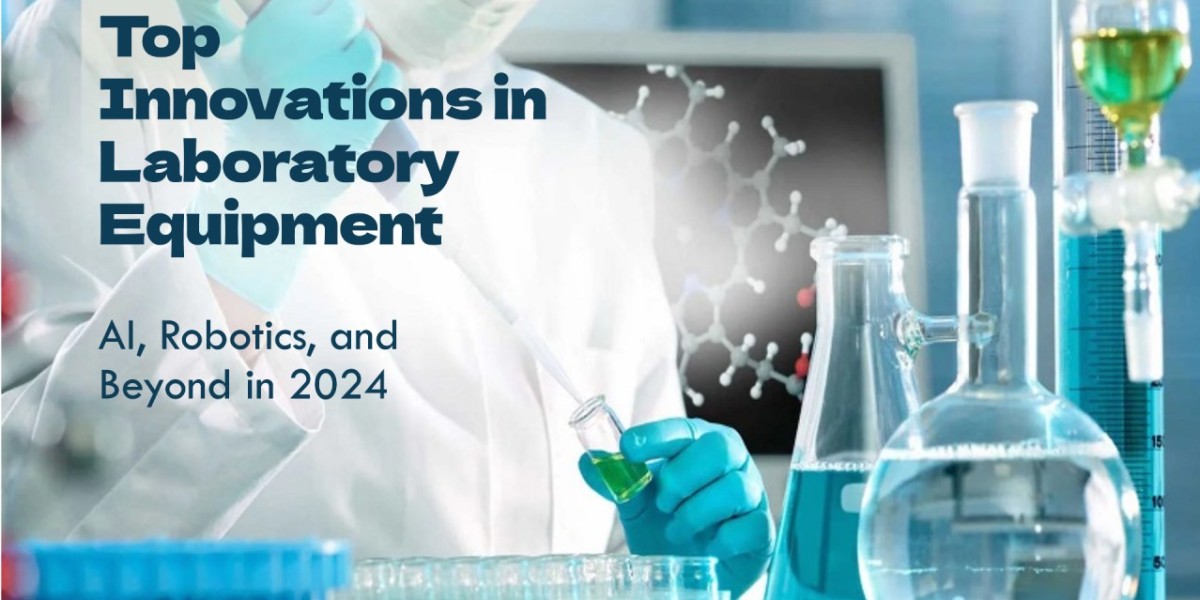1. How are companies like Agilent Technologies and Thermo Fisher Scientific integrating AI and automation into their lab equipment to enhance precision and efficiency?
Agilent Technologies and Thermo Fisher Scientific are at the forefront of integrating artificial intelligence (AI) and automation into laboratory equipment, aiming to enhance precision, efficiency, and data reproducibility in research and diagnostics. These advancements are critical in meeting the growing demands for high-throughput screening, complex data analysis, and personalized medicine.
Agilent Technologies has focused on automating its liquid chromatography and mass spectrometry systems, incorporating AI-driven algorithms that optimize workflows, reduce human error, and improve analytical accuracy. For instance, Agilent’s recent innovations include the integration of machine learning algorithms into their mass spectrometry systems, which enhances peak identification and quantitation in complex biological samples. This has led to more accurate biomarker discovery and drug development processes.
Thermo Fisher Scientific is leveraging AI in their laboratory automation systems, such as the "Nexsa Surface Analysis System," which integrates AI to automate surface chemical analysis. This system is crucial for material science and pharmaceutical research, as it provides high-resolution, reproducible data with minimal operator intervention. Moreover, Thermo Fisher’s "Ion Torrent Genexus System" uses AI to automate next-generation sequencing (NGS), making genomic testing faster and more accessible.
2. What are the latest R&D investments by companies such as BD and Beckman Coulter in the development of next-generation diagnostic tools?
BD (Becton, Dickinson and Company) and Beckman Coulter are significantly ramping up their R&D investments to develop next-generation diagnostic tools that address the need for rapid, accurate, and cost-effective diagnostics, particularly in the wake of the COVID-19 pandemic.
BD has invested heavily in molecular diagnostics, with a focus on expanding its portfolio of point-of-care (POC) testing devices. The BD Veritor™ Plus System, for example, is a recent innovation that delivers rapid SARS-CoV-2 and influenza A+B testing results. The company has also invested in AI-driven platforms that enhance diagnostic accuracy and speed, particularly in infectious disease detection.
Beckman Coulter, a subsidiary of Danaher Corporation, has directed its R&D efforts towards the development of integrated diagnostic systems. Their recent innovation, the DxH 900 Hematology Analyzer, uses advanced flow cytometry and machine learning to provide faster and more accurate blood cell analysis. This system is designed to handle large volumes of samples with minimal manual intervention, making it ideal for high-throughput laboratories.
3. How are recent mergers and acquisitions by companies like Roche and PerkinElmer shaping the competitive landscape?
Mergers and acquisitions (M&A) in the laboratory equipment sector are reshaping the competitive landscape by enabling companies like Roche and PerkinElmer to expand their market reach, diversify their product portfolios, and accelerate innovation.
Roche has been particularly active in the diagnostics space. In 2021, Roche completed the acquisition of GenMark Diagnostics, a leader in multiplex molecular diagnostic testing, for approximately $1.8 billion. This acquisition has strengthened Roche’s position in the fast-growing field of infectious disease diagnostics, providing access to GenMark’s innovative ePlex® system, which offers rapid, syndromic testing capabilities.
PerkinElmer has also been expanding through acquisitions. In 2021, the company acquired Oxford Immunotec, a global leader in advanced diagnostic technologies, for $591 million. This acquisition bolsters PerkinElmer’s capabilities in immunology and infectious disease testing, aligning with the company’s strategy to enhance its diagnostics offerings, particularly in emerging markets.
These M&A activities are not just about expanding product lines but also about gaining access to innovative technologies and new markets. For instance, Roche’s acquisition of GenMark has given it a strong foothold in the syndromic testing market, which is expected to grow significantly as healthcare systems increasingly adopt rapid, comprehensive diagnostic tools. Meanwhile, PerkinElmer’s acquisition of Oxford Immunotec enhances its presence in the tuberculosis (TB) diagnostics market, particularly in regions with high TB burdens.
4. What are the challenges faced by companies like Shimadzu Corporation in navigating the regulatory landscape for new products in different global markets?
Companies like Shimadzu Corporation face several challenges in navigating the complex regulatory landscape when launching new products across global markets. These challenges include varying regulatory standards, lengthy approval processes, and the need for extensive clinical validation.
Shimadzu Corporation, a leader in analytical and measuring instruments, has encountered regulatory hurdles, particularly in regions with stringent approval processes such as the European Union (EU) and the United States. The company’s launch of its "LCMS-8060NX" triple quadrupole mass spectrometer, for example, required compliance with multiple regulatory bodies, each with its own set of requirements for clinical validation and safety.
In the EU, Shimadzu had to navigate the new In Vitro Diagnostic Regulation (IVDR), which imposes stricter requirements on diagnostic devices, including more rigorous clinical evidence and performance evaluations. In the US, the Food and Drug Administration (FDA) requires extensive documentation and clinical trial data, which can delay product launches by several months or even years.
To overcome these challenges, Shimadzu has invested in global regulatory affairs teams that work closely with local authorities to ensure compliance and streamline the approval process. Additionally, the company has focused on designing products that meet international standards from the outset, reducing the need for costly modifications or re-certifications in different markets.
Despite these efforts, regulatory challenges remain a significant barrier to rapid market entry, particularly in emerging markets where regulatory frameworks are still evolving. The global regulatory landscape is becoming increasingly complex, with new regulations being introduced to address the safety and efficacy of advanced diagnostic technologies, adding to the burden on companies like Shimadzu.
For more information visit at MarketResearchFuture
Other Trending Reports










